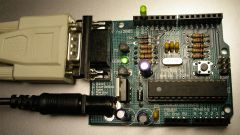Instruction
1
Run the program, which will be the server for the data. In other words, to check availability or openness of the port, you need a program which will connect customers from the network. For example, you want to play a network game. So, you need to create a server of this game on your PC will connect to the other players. The same applies to other programs designed for operation on the network.
2
Click "start" and click "Run." In the command box, type cmd, you open the system console Windows. In the black window, type netstat-b this will start the test currently open and used ports, with the name of the processes. You will see a list in the form of columns with headers: Name, Local address, Foreign address, State. The name means the name of the communication Protocol, TCP or UDP. Also in this column is written the name of the process that is associated with this connection.
3
Local address is your computer and the port number on it. External address points to the computer that established the current connection. In the column "Status" may be the record Established — it means the port is opened successfully and connection is established. Message, Closed, Close_wait means that the packet exchange has completed successfully. All other ports are currently inactive and closed, that is, produce no data exchange.
4
Note that checking the netstat utility only concerns your computer and does not apply to servers of the ISP. This means that you will not be able in this way to find out blocked ports. Most companies restrict the use of programs for listening or port scanning. However, knowing the exact room and wanting to define a closed port or open, you can use the online verification services.
5
Launch any browser and go to the page http://www.whatsmyip.org/port-scanner/ or http://portscan.ru. Enter the window of the test instrument you are interested in the number and press Enter or "Verify". After a few seconds you will get an answer about the availability or unavailability of the port.




